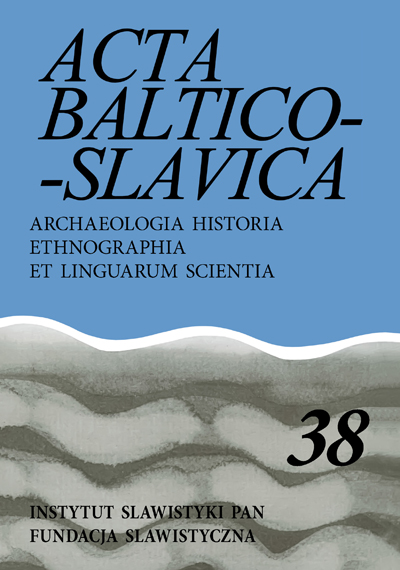Andreas Fülberth, Riga. Kleine Geschichte der Stadt. Ciekawy przewodnik nie tylko po Rydze, ale także po historii Łotwy
Andreas Fülberth, Riga. Kleine Geschichte der Stadt
Author(s): Tomasz OtockiSubject(s): History, Review, Book-Review
Published by: Instytut Slawistyki Polskiej Akademii Nauk
Keywords: The history of Latvia; history of Riga; Poles in Riga; German Riga
Summary/Abstract: At the beginning of 2014, the book “Riga. Kleine Geschichte der Stadt” (Riga. A short history of the town) was issued. The author is Andreas Fülberth, a young historian from Germany, who is a lecturer of the history of Eastern Europe in the University of Kiel. He has already published several works about the Baltic states (in German: “Baltikum”), the most important of them being “Tallinn – Riga – Kaunas. Ihr Ausbau zu modernen Hauptstädten 1920–1940. Köln u. a. 2005 (Das Baltikum in Geschichte und Gegenwart, Bd. 2), which is dedicated to the plans of architectural rebuilding of the Baltic capitals (Kaunas – Riga – Tallinn) during the time of the first independence (1918–1940). The history of Riga by Andreas Fülberth begins – very traditionally – with the establishing of the town by Bishop Albert of Riga in 1201. Actually we can learn not only about the history of the town. The book by Andreas Fülberth provides a quite long trip through the history of Livonia (now a part of Latvia). For Polish readers very important and interesting piece of Riga’s history could be so called “Polish times” (to be more precise: “Polish-Lithuanian”) in Livonia – which used to be seen quite critical by Latvian historians before the war. We can learn also about Ignacy Mościcki who studied in Riga, the treaty of Riga from March 1921, as well as the Polish academic fraternities in Livonia (Arcadia and Welecja). Maybe the most important part of the book begins in 1918 – when Latvia gained independence for the first time in her history. We can learn not only about Kārlis Ulmanis and the Soviet-Latvian government of Pēteris Stučka, but also about the activities of Andrievs Niedra, a pro-German prime minister of Latvia. Andreas Fülberth, as a passionate lover of architecture, provides an interesting piece of information about the architectural rebuilding of Riga during the time of Ulmanis – we can learn the history of the Freedom Monument (1935), old town, which gained a new shape during the thirties. The Latvinization of the town during the first independence and Sovietization during the occupation (1940–1990) is also an interesting fact. The book can be recommended for all readers who do not have broad knowledge of the history of Latvia, but it is still a very interesting journey also for those interested in the Baltic states who want to learn about some curiosities from the history of the town. Do you know why the Freedom Monument was not destroyed during the Soviet time? Do you know the history of Riga’s tube that has been never built? Do you know the mathematician Ilja Rips? If not, you should read the book of Andreas Fülberth.
Journal: Acta Baltico Slavica
- Issue Year: 2014
- Issue No: 38
- Page Range: 323-332
- Page Count: 10
- Language: Polish

